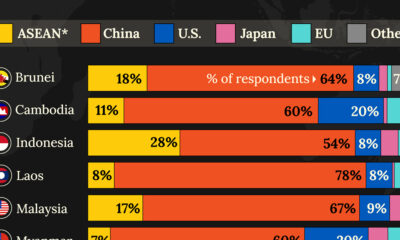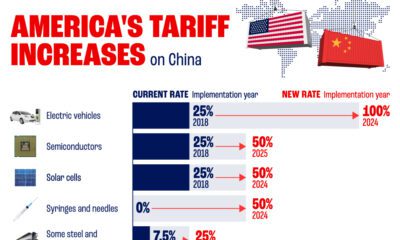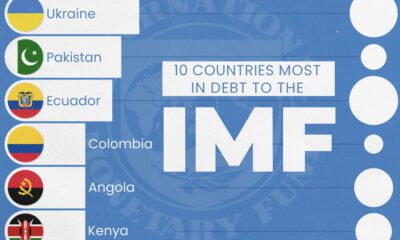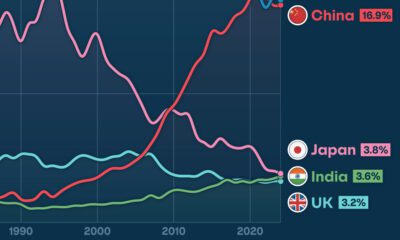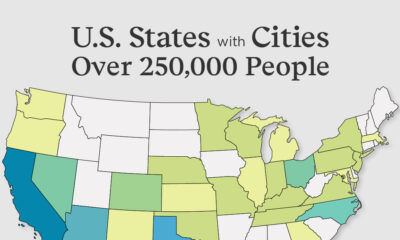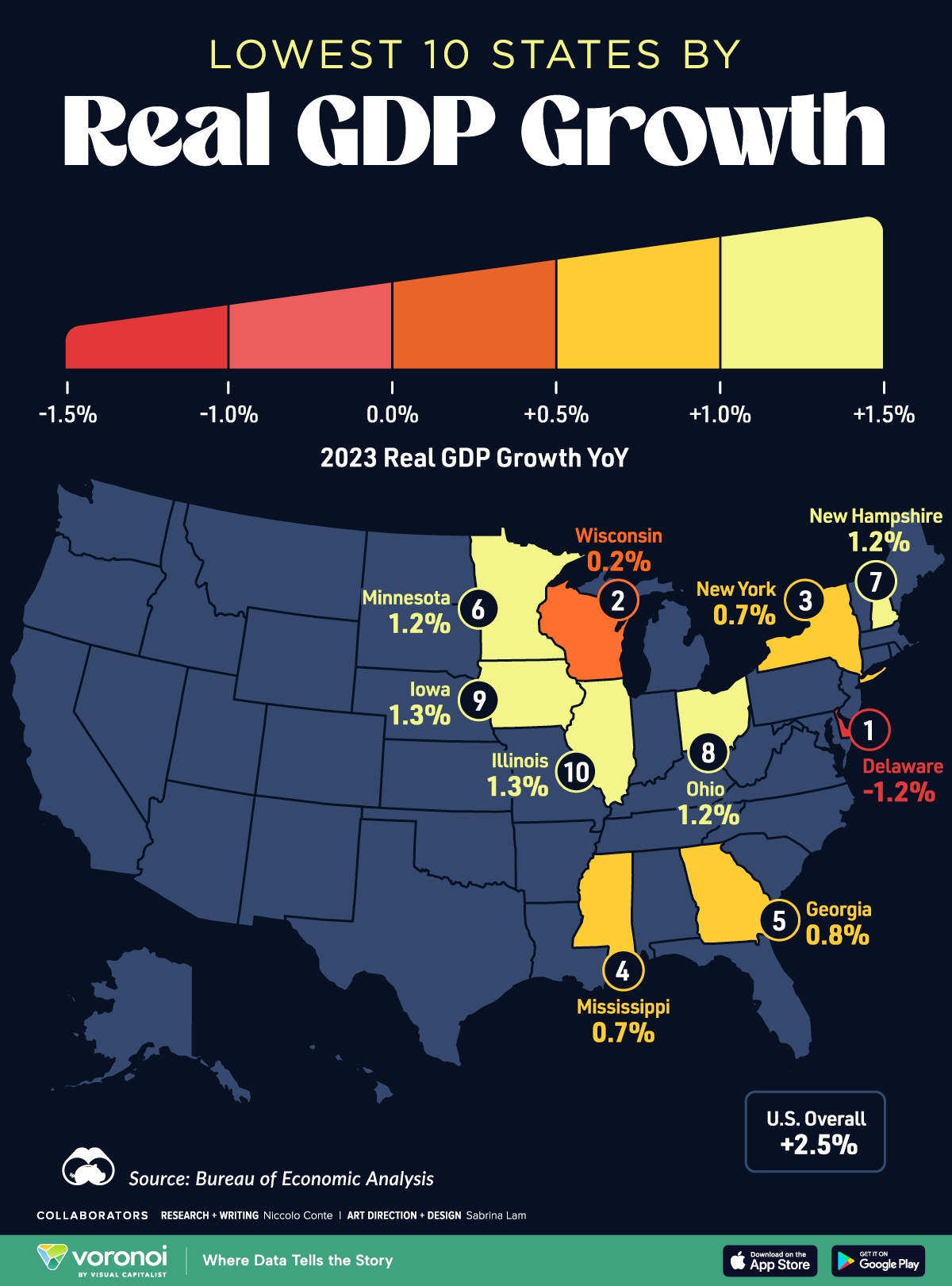Markets
Visualized: Past Interest Rate Cut Cycles and 2024 Forecasts
This visual is part of our 2024 Global Forecast Series. For full access to the series, learn more here.
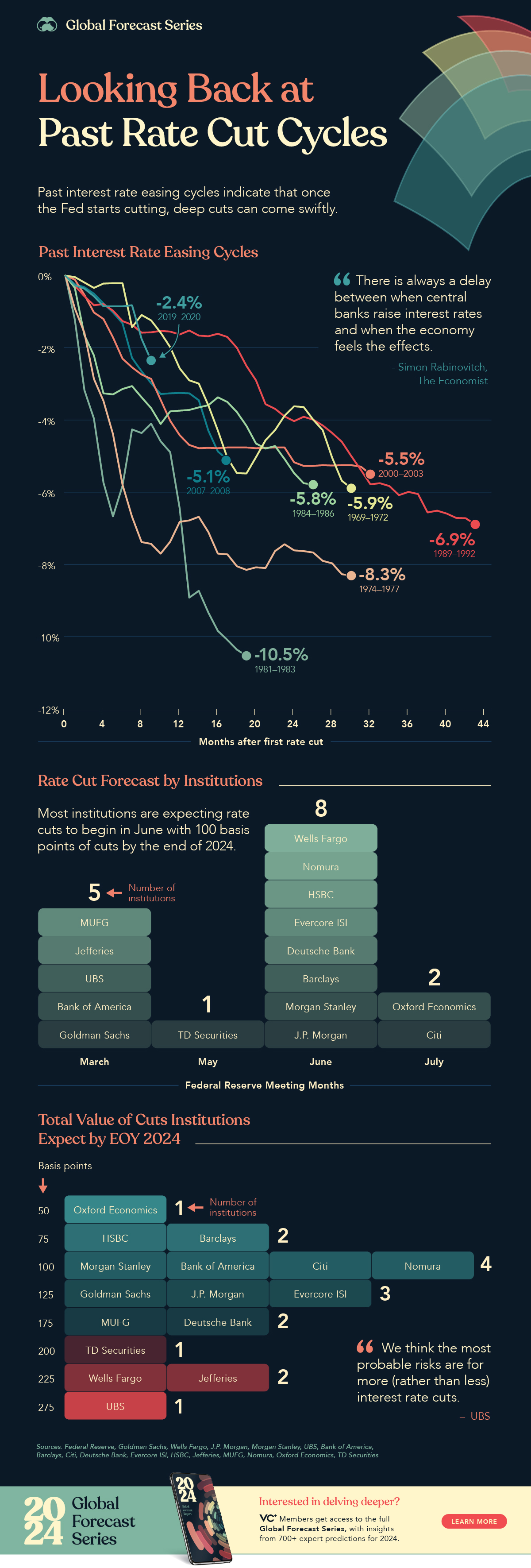
Past Interest Rate Cut Cycles and 2024 Rate Cut Forecasts
A key question mark for the U.S. and global economy is around when the Federal Reserve will cut interest rates in 2024 and by how much.
After a rapid set of rate hikes throughout 2022, the U.S. Federal Reserve now faces the challenge of timing its easing of monetary policy to ensure a soft landing for the economy.
This visualization from our 2024 Global Forecast Series uses data from the Federal Reserve to chart past interest rate cut cycles and visualizes forecasts by top banks and institutions on when they expect the first rate cut of 2024 and the number of cuts they expect by end of year.
Looking Back at Past Interest Rate Cuts Cycles
While interest rate cycles are an economic balancing act which must be carefully managed, rate hikes and cuts of the past have typically been steep and swift.
Looking back at past interest rate cuts for historical context, we can see how quickly these easing cycles played out, especially those in the 1970s and 1980s.
| Interest Rate Cut Cycle | Rate Cut Cycle Duration (months) | Total Rate Cuts |
|---|---|---|
| 2019-2020 | 10 | -2.35% |
| 2007-2008 | 18 | -5.10% |
| 2000-2003 | 33 | -5.50% |
| 1989-1992 | 44 | -6.89% |
| 1984-1986 | 27 | -5.79% |
| 1981-1983 | 20 | -10.53% |
| 1974-1977 | 31 | -8.31% |
| 1969-1972 | 31 | -5.89% |
Rate cuts typically begin once the Federal Reserve has confirmation that the economy has slowed down and inflationary pressures have subsided. Nearly every interest rate cutting cycle has seen the economy enter a recession right before or after rate cuts have started.
“There is always a delay between when central banks raise interest rates and when the economy feels the effects.”
– Simon Rabinovitch, The Economist
While the recessions occur around the time rates are cut, they’re usually a delayed effect from the tighter financial conditions caused by rate hikes, with cuts bringing looser and more accommodative financial conditions for the economy down the line.

Institutional Forecasts for Interest Rate Cuts in 2024
After some of the most rapid rate hikes in history kicked off this latest interest rate cycle in 2022, market participants and banks are leaning towards similarly rapid set of rate cuts in 2024.
Most institutions, including J.P. Morgan, Deutsche Bank, and Morgan Stanley, are expecting the Fed’s first rate cut to occur at the mid-point of the year in June. There is a group of outliers which includes UBS, Bank of America, and Goldman Sachs, that are expecting the first rate cut as early as March.
When it comes to the total amount of interest rate cuts we’ll see in 2024, the majority of institutions are forecasting around 100 to 125 basis points (bps) in rate cuts, which would bring the Federal Funds Rate to around 4-4.25%.
Rate Cuts or Not, is a Recession Inevitable?
While nearly every interest rate cycle of the past has experienced a recession around the time of rate cuts, Federal Reserve Chair Jerome Powell is optimistic that this time may be different.
“I have always felt, since the beginning, that there was a possibility, because of the unusual situation, that the economy could cool off in a way that enabled inflation to come down without the kind of large job losses that have often been associated with high inflation and tightening cycles.
So far, that’s what we’re seeing.”
– Jerome Powell, Chair of the U.S. Federal Reserve
With FOMC members themselves projecting more conservative rate cuts in 2024 with a forecasted median year-end rate of 4.6%, time will tell whether more conservative or agressive rate cuts this year will manage to keep the economy out of a recession.
Maps
Mapped: The 10 U.S. States With the Lowest Real GDP Growth
In this graphic, we show where real GDP lagged the most across America in 2023 as high interest rates weighed on state economies.

The Top 10 U.S. States, by Lowest Real GDP Growth
This was originally posted on our Voronoi app. Download the app for free on iOS or Android and discover incredible data-driven charts from a variety of trusted sources.
While the U.S. economy defied expectations in 2023, posting 2.5% in real GDP growth, several states lagged behind.
Last year, oil-producing states led the pack in terms of real GDP growth across America, while the lowest growth was seen in states that were more sensitive to the impact of high interest rates, particularly due to slowdowns in the manufacturing and finance sectors.
This graphic shows the 10 states with the least robust real GDP growth in 2023, based on data from the Bureau of Economic Analysis.
Weakest State Economies in 2023
Below, we show the states with the slowest economic activity in inflation-adjusted terms, using chained 2017 dollars:
| Rank | State | Real GDP Growth 2023 YoY | Real GDP 2023 |
|---|---|---|---|
| 1 | Delaware | -1.2% | $74B |
| 2 | Wisconsin | +0.2% | $337B |
| 3 | New York | +0.7% | $1.8T |
| 4 | Missississippi | +0.7% | $115B |
| 5 | Georgia | +0.8% | $661B |
| 6 | Minnesota | +1.2% | $384B |
| 7 | New Hampshire | +1.2% | $91B |
| 8 | Ohio | +1.2% | $698B |
| 9 | Iowa | +1.3% | $200B |
| 10 | Illinois | +1.3% | $876B |
| U.S. | +2.5% | $22.4T |
Delaware witnessed the slowest growth in the country, with real GDP growth of -1.2% over the year as a sluggish finance and insurance sector dampened the state’s economy.
Like Delaware, the Midwestern state of Wisconsin also experienced declines across the finance and insurance sector, in addition to steep drops in the agriculture and manufacturing industries.
America’s third-biggest economy, New York, grew just 0.7% in 2023, falling far below the U.S. average. High interest rates took a toll on key sectors, with notable slowdowns in the construction and manufacturing sectors. In addition, falling home prices and a weaker job market contributed to slower economic growth.
Meanwhile, Georgia experienced the fifth-lowest real GDP growth rate. In March 2024, Rivian paused plans to build a $5 billion EV factory in Georgia, which was set to be one of the biggest economic development initiatives in the state in history.
These delays are likely to exacerbate setbacks for the state, however, both Kia and Hyundai have made significant investments in the EV industry, which could help boost Georgia’s manufacturing sector looking ahead.
-
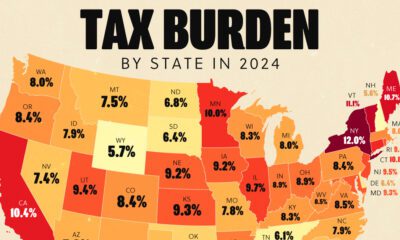
 Personal Finance1 week ago
Personal Finance1 week agoVisualizing the Tax Burden of Every U.S. State
-

 Misc6 days ago
Misc6 days agoVisualized: Aircraft Carriers by Country
-

 Culture7 days ago
Culture7 days agoHow Popular Snack Brand Logos Have Changed
-

 Mining1 week ago
Mining1 week agoVisualizing Copper Production by Country in 2023
-

 Misc1 week ago
Misc1 week agoCharted: How Americans Feel About Federal Government Agencies
-
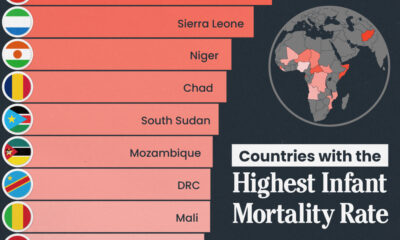
 Healthcare1 week ago
Healthcare1 week agoWhich Countries Have the Highest Infant Mortality Rates?
-
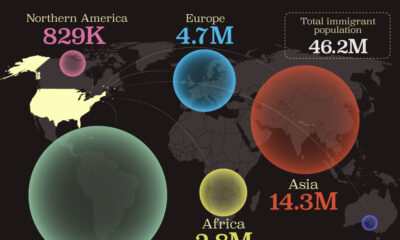
 Demographics1 week ago
Demographics1 week agoMapped: U.S. Immigrants by Region
-
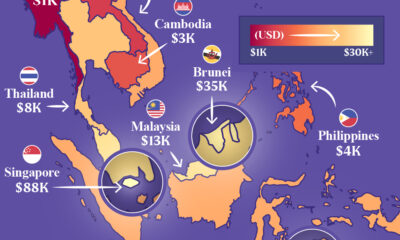
 Maps1 week ago
Maps1 week agoMapped: Southeast Asia’s GDP Per Capita, by Country


